|
MANUALS > Inventory > Inventory Module > Inventory, Update Menu > Inventory Transaction > Inventory Transaction Buttons > Owner Change Button, via Inventory Transaction
Owner Change Button, via Inventory Transaction
The Owner Change  button is used to change the owner that is currently associated with a part in inventory. However, the part does not have to have an owner for it to be associated to a new owner. button is used to change the owner that is currently associated with a part in inventory. However, the part does not have to have an owner for it to be associated to a new owner.
When a part is placed on an order or initial loaded, an owner can be assigned to the part through the Owner field of the Order Detail, Optional Tab or the P/N Initial Load window. When an owner is associated with a part, the part will indicate that it is owned (with the owned  icon) via Inventory Transaction. icon) via Inventory Transaction.
Note: When the owner is changed, there are financial implications: new Journal Entries are written for the part and the part's Fixed Assets are deleted. See below for more information.
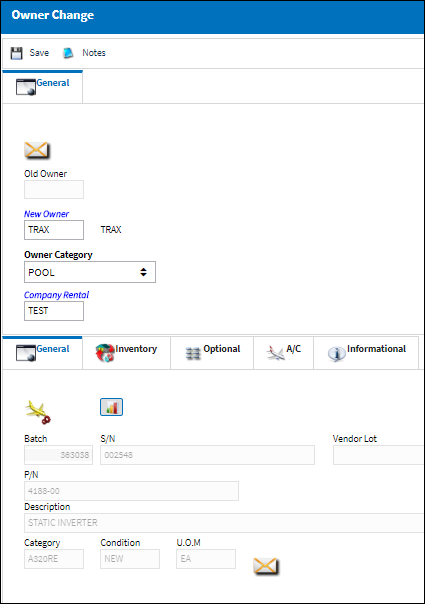
The following information/options are available in this window:
_____________________________________________________________________________________
Old Owner
The current Owner of the part.
New Owner
The new Owner to be associated with the part. This owner will replace the previous owner.
Note: If leaving this field blank/null, the transaction is a change from the old owner to the user and a Fixed Asset is created for the part, as indicated by the following prompt:

Owner Category drop down
The type of ownership. The options are as follows. One must be selected. This field is available once a New Owner is entered.
Pool - Parts belonging to a pool agreement with the vendor.
Manage - Maintenance organization manage parts in their inventory that are owned by a particular owner and are to be used only for a particular customer's aircraft.
Consigned - Part is still associated with the owner and does not yet belong to the company.
None - Does not have a specific Owner Category.
Company Rental
The company managing the rental of the part.
_____________________________________________________________________________________
Note: The owner change may influence the total stock value (see below). Owner codes are set up in the Owner Master (Settings).
Financial Implications:
When a part's owner is changed, new Journal Entries are written for the part and the part's existing Fixed Assets are deleted.
For example, notice that the following inventoried part has the following Journal Entries.
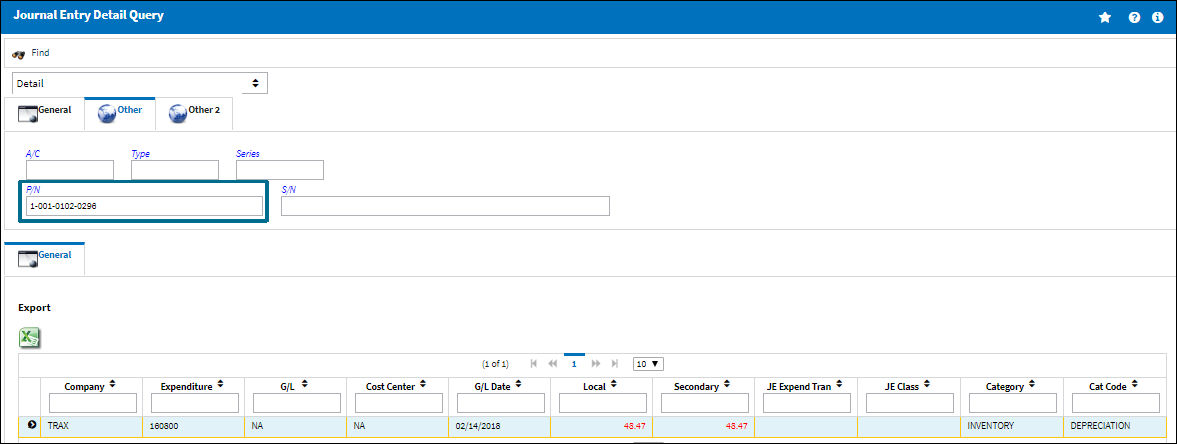
The same part also has a Fixed Asset.
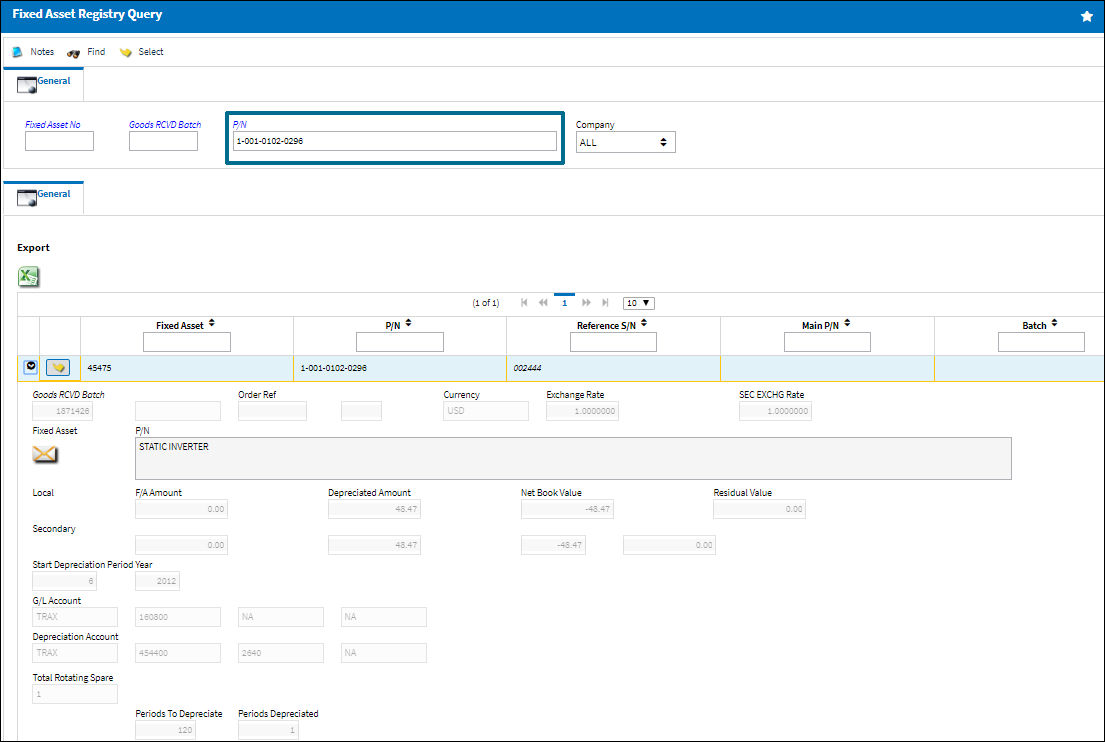
Now the part goes through an owner change, via Inventory Transaction.
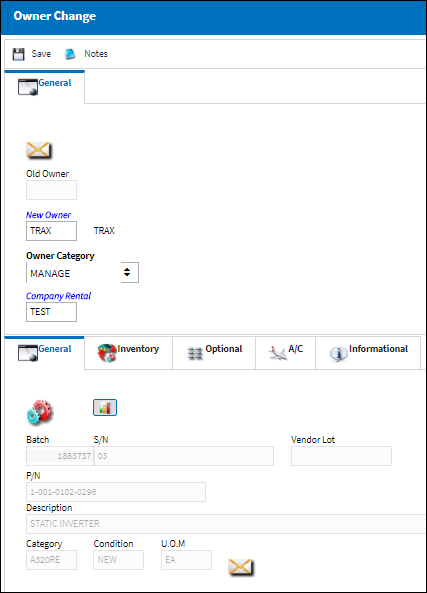
Once the part is linked to an owner, notice that the part contains the owner details in the Inventory Transaction.
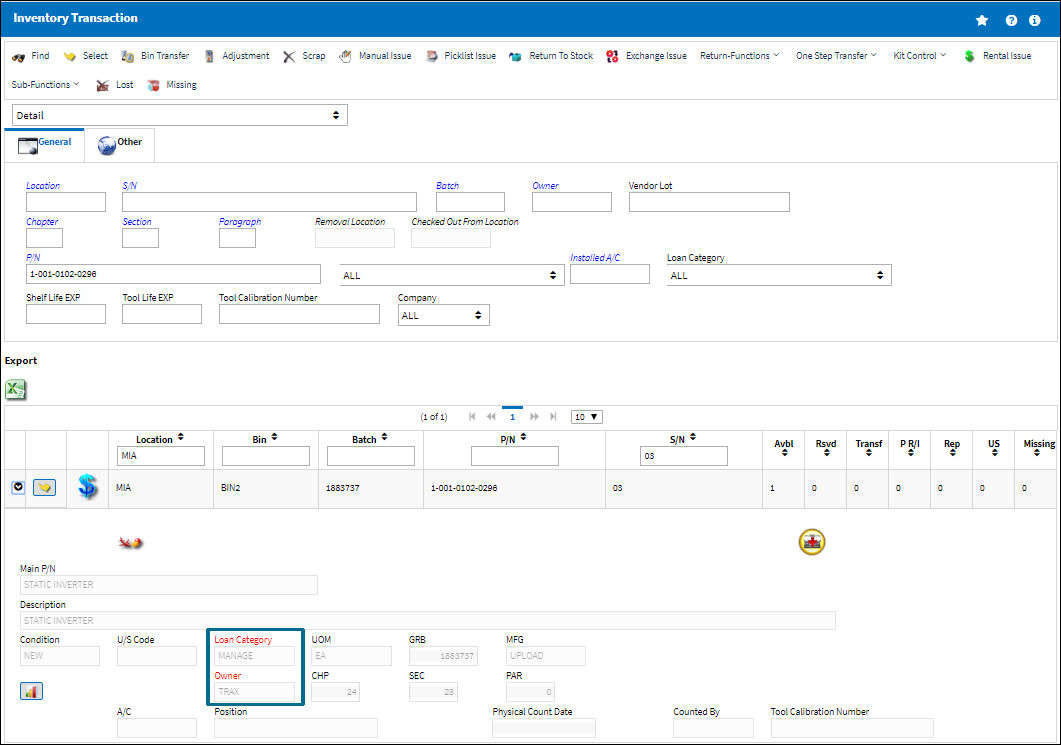
From the Journal Entry Detail Query, the new 'SALES' J/Es were written once the owner was changed.
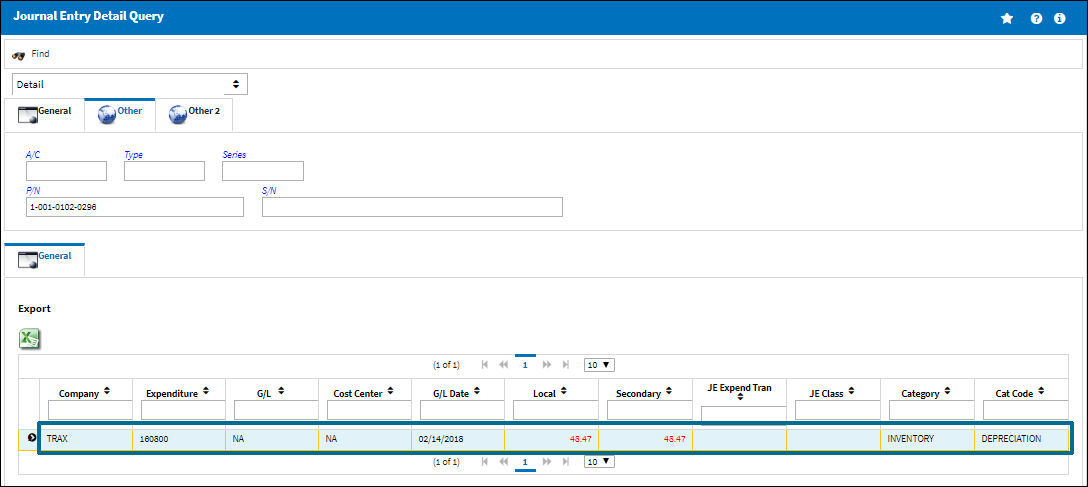
Note: The above screenshot has been modified to highlight the pertinent columns of the window for this example.
Also notice that the part no longer has the Fixed Asset.
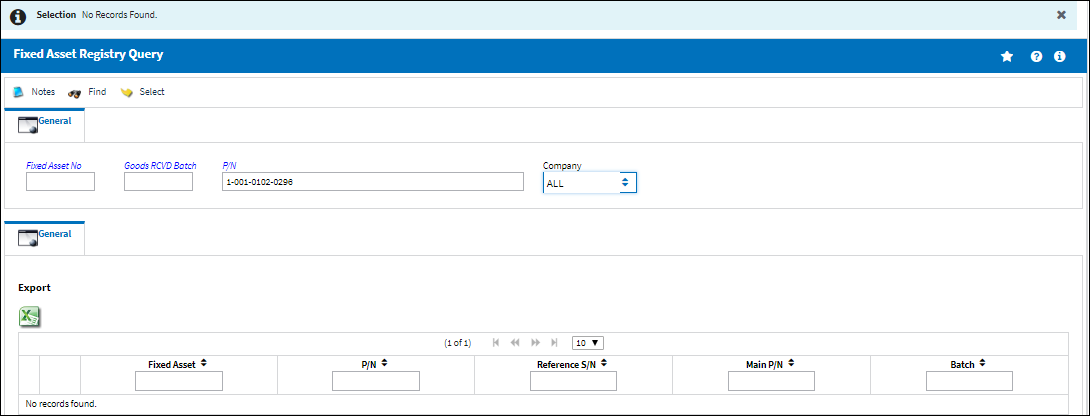
Additional information can be included through the Notes  button. button.
|
In This Section Notes Button, via Owner Change |
See Also Inventory Transaction Buttons Bin Transfer Button, via Inventory Transaction Adjustment Button, via Inventory Transaction Scrap Button, via Inventory Transaction Manual Issue Button, via Inventory Transaction Picklist Issue Button, via Inventory Transaction Return To Stock Button, via Inventory Transaction Exchange Issue Button, via Inventory Transaction Rental Issue Button, via Inventory Transaction Lost Button, via Inventory Transaction P/N Missing Button, via Inventory Transaction Return To Vendor Button, via Inventory Transaction Return Of Loan, via Inventory Transaction Return To Owner, via Inventory Transaction Return From Customer Button, via Inventory Transaction Company Change Button, via Inventory Transaction RTN From Quarantine Button, via Inventory Transaction Single Line Button, via Inventory Transaction Multi Line Button, via Inventory Transaction Break Out Complete Kit Button, via Inventory Transaction Break Out By P/N Button, via Inventory Transaction Re-Build Kit Button, via Inventory Transaction Build Multi Kit Button, via Inventory Transaction Box Button, via Inventory Transaction Requisition Button, via Inventory Transaction Custom Duty Change Button, via Inventory Transaction/History P/N Master QRY Button, via Inventory Transaction Interchangeable Button, via Inventory Transaction Effectivity Button, via Inventory Transaction Order QRY Button, via Inventory Transaction Bin Control Button, via Inventory Transaction P/N S/N Change Button, via Inventory Transaction Attachment Button, via Inventory Transaction Manual Button, via Inventory Transaction P/N-S/N Position Change Button, via Inventory Transaction Document Change Button, via Inventory Transaction P/N Detail Print Button, via Inventory Transaction P/N Initial Times Accrual Button, via Inventory Transaction Release From RO, via Inventory Transaction Import Software Button, via Inventory Transaction Bin Replace Import Button, via Inventory Transaction Notes Button, via Inventory Transaction eMRO Import P/N Birth Date button, via Inventory Transaction Update Reserved Quantity Button, via Inventory Transaction Update Hold Qty Button, via Inventory Transaction Cycle Count Button, via Inventory Transaction Tool Check-In Button, via Inventory Transaction (Tools Locator) Tool Check-Out Button, via Inventory Transaction (Tools Locator) Tools Picklist Button, via Inventory Transaction (Tools Locator) Tool Calibration Change Button, via Inventory Transaction (Tools Locator) Tool Build/Break Button, via Inventory Transaction (Tools Locator) Tools Concession Button, via Inventory Transaction (Tools Locator) eMRO Smart Query Button, via Inventory Transaction |
|

 Share
Share

 Print
Print
![]() button is used to change the owner that is currently associated with a part in inventory. However, the part does not have to have an owner for it to be associated to a new owner.
button is used to change the owner that is currently associated with a part in inventory. However, the part does not have to have an owner for it to be associated to a new owner.![]() icon) via Inventory Transaction.
icon) via Inventory Transaction. 
![]()






![]() button.
button.
 Share
Share

 Print
Print